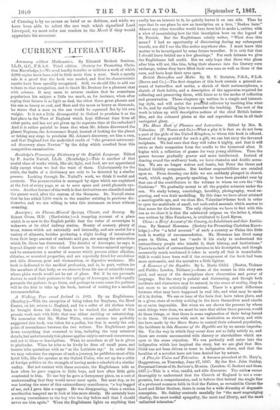A Romance of the Republic. By L. Maria Child. (Boston,
Ticknor and Fields ; London, Triibner.)—Some of the scenes in this story are good, and many of the descriptions show observation and power of language. But the story is painful and distressing, and though both incidents and characters may be natural, in the sense of reality, they do not seem to us artistically consistent. There is a great difference between what may have happened in real life, and what may be made of it in fiction. We see or hear of the facts that have taken place, and in a given state of society nothing in the facts themselves need startle us or.seem impossible. But when we are shown the persons by whom such things were done, we must be mire that either those persons would do those things, or that there is some explanation of their being forced to do them. Of course with such an institution as slavery, and with the laws made by the Slave States to control their coloured population, the incidents in this Romance of the Republic are by no means improba-
ble. Yet the way in which they occur does not so fully satisfy ns, and there are events unconnected with slavery or slaveholders which are open to the same objection. We can perfectly well enter into the indignation which has inspired the story, but we are glad that Mrs. Child has not been driven to trust to indignation alone, and that the faculties of a novelist have not been denied her by nature.






























 Previous page
Previous page